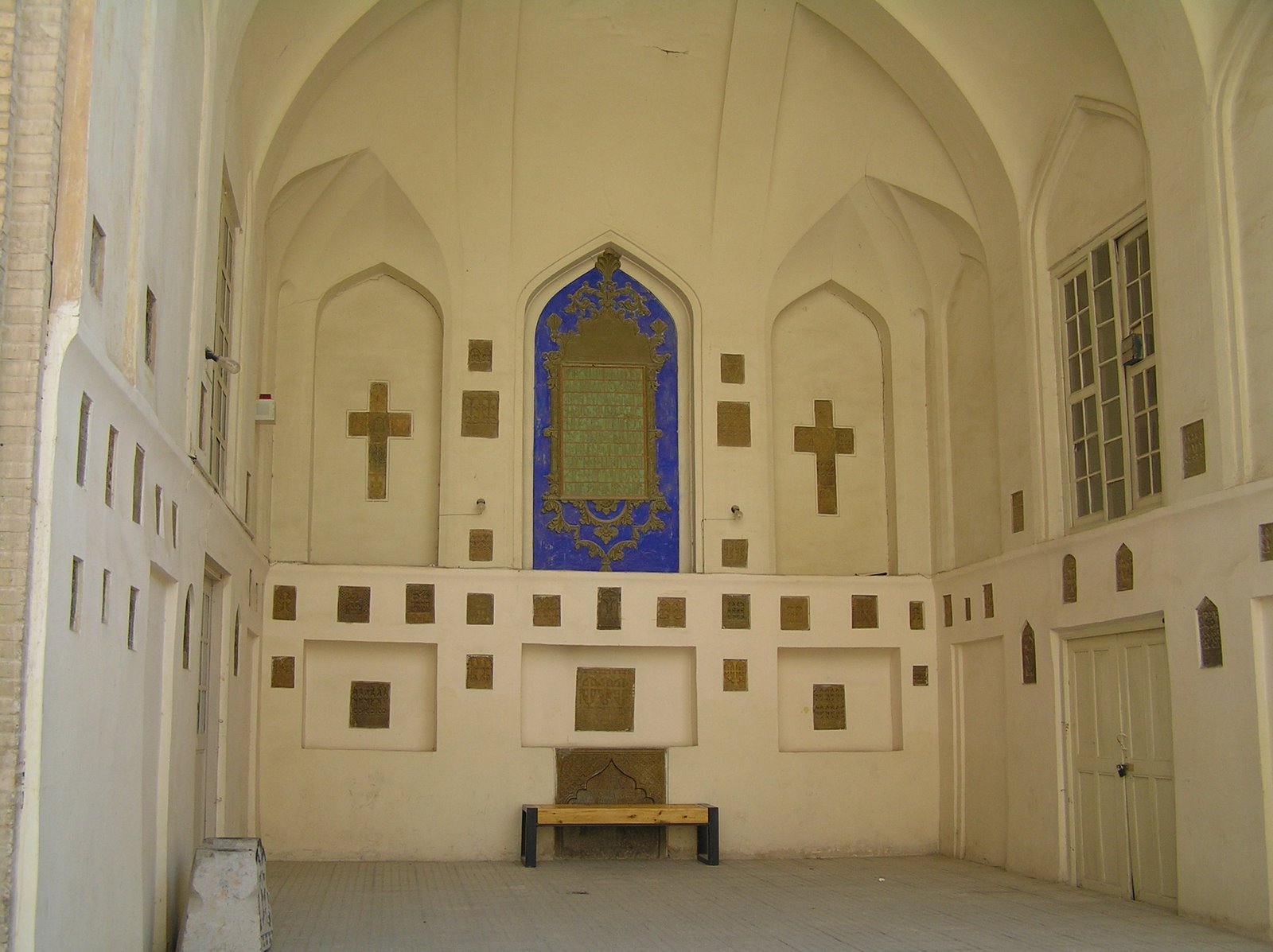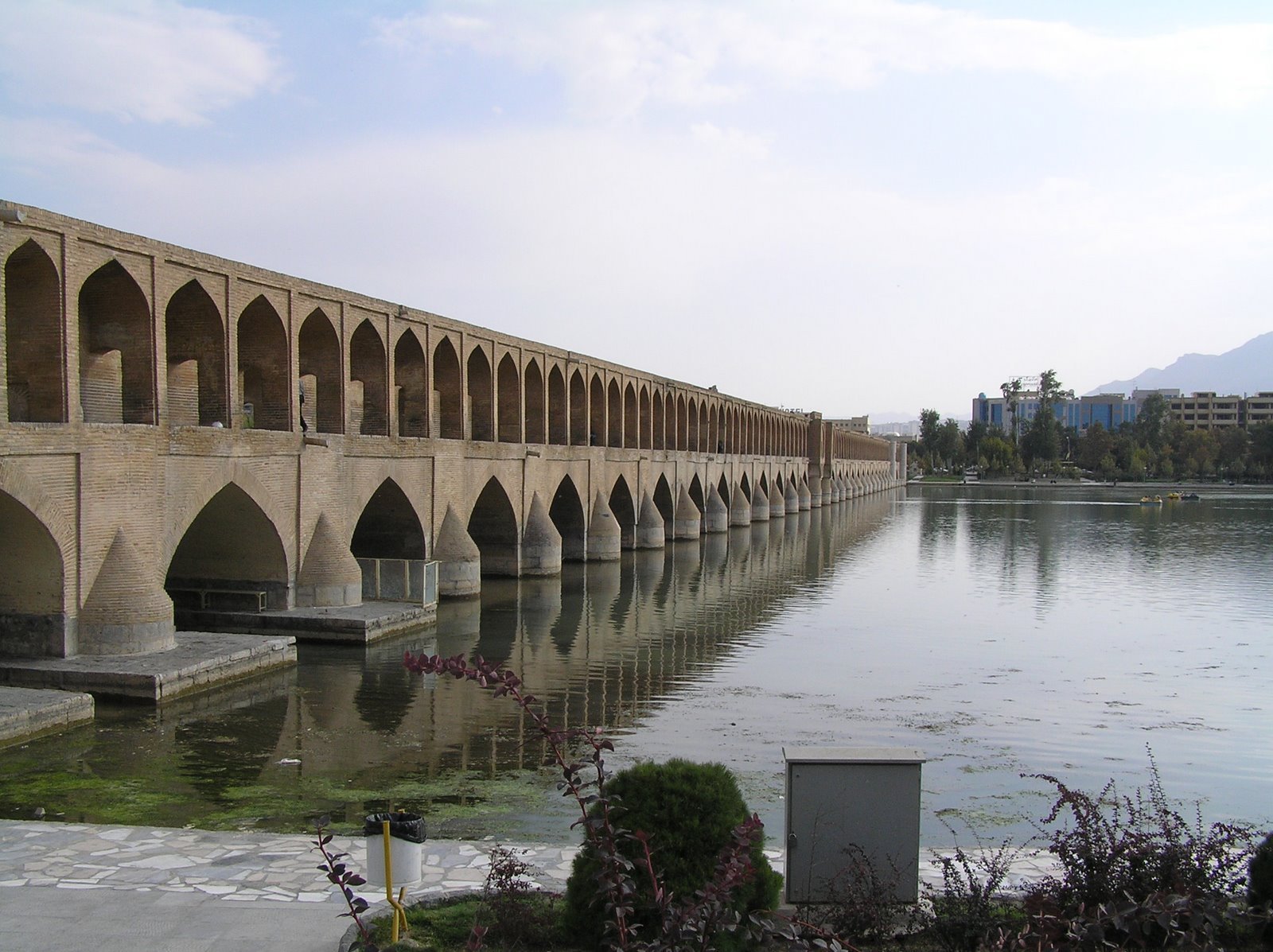Bridges
Artwork at the Chehel Sotoun Palace in Isfahan, Iran.
Vank Armenian Orthodox Cathedral in New Julfa (the Armenian Quarter) of Isfahan.
Today is our last full day in Isfahan. We made a quick stop at the Chehel Sotoun Palace built by Shah Abbas II, where exquisite artwork adorns the walls. The artists were a mixture of European and Iranian (Persian), giving a rich texture to the place. The highlight of the day was our time in the Armenian Quarter. As Shah Abbas was converting the city of Isfahan to the Safavid capital, he brought in artisans from far flung locales. He also brought multitudes of Armenians (some reports say as many as 200,000) and gave them land just outside of the city. As Isfahan grew, New Julfa (named for the old Julfa in present-day Armenia) became part of the city. There are twelve churches and sizable Armenian Orthodox Christian community there.
We visited the Vank Cathedral and Museum of New Julfa. The architecture of the cathedral itself is Islamic in style; one might mistake it for a mosque. However, upon closer inspection, the dome is topped with a cross and the muezzin has been converted to a bell tower.
Tehran schoolgirls practicing their English and posing for photos with members of our group.
Coming in the doors, we were greeted by a gaggle of about fifty school girls on a field trip from Tehran. Cameras came flying out and chaos ensued as they swarmed to take pictures of us as well as to have their pictures taken with us. This was not an isolated incident of curiosity, but has happened quite frequently during our travels. Not a lot of foreigners are coming these days, so we are a bit of a novelty; at the same time, there is an Iranian pride ecstatic to have foreigners share in the nation's rich history and culture.
Prayer nook at Vank Cathedral outside of Isfahan, Iran.
Inside the cathedral, where Biblical murals covered every wall (and photos are forbidden), Armenian sacred chant played over a loud speaker. An Armenian guide answered questions from the curious crowds. They seemed especially interested in a Farsi Bible on display.
Our final stop today was at the popular thirty-three arches bridge. When it was constructed in 1602, part of the intent was for the river to be split into thirty-three separate channels to distribute water equally to different parts of town. This was meant to convey the Islamic ideal of equality for all, both symbolically and really.
Isfahan’s 33 Arches Bridge, built in 1602.
Standing there, as the crowds walked past and the sun approached the horizon, we couldn't help but wonder: could it be that we, too, are called to build such bridges that demonstrate a symbolic and real equality? It might be a corny thought, but maybe that's the possibility that a group of giggly schoolgirls or a throng of gawking teenagers or even ten foreign tourists offers here in momentary exchanges: that together we can build such bridges giving waters of hope to all who thirst.





